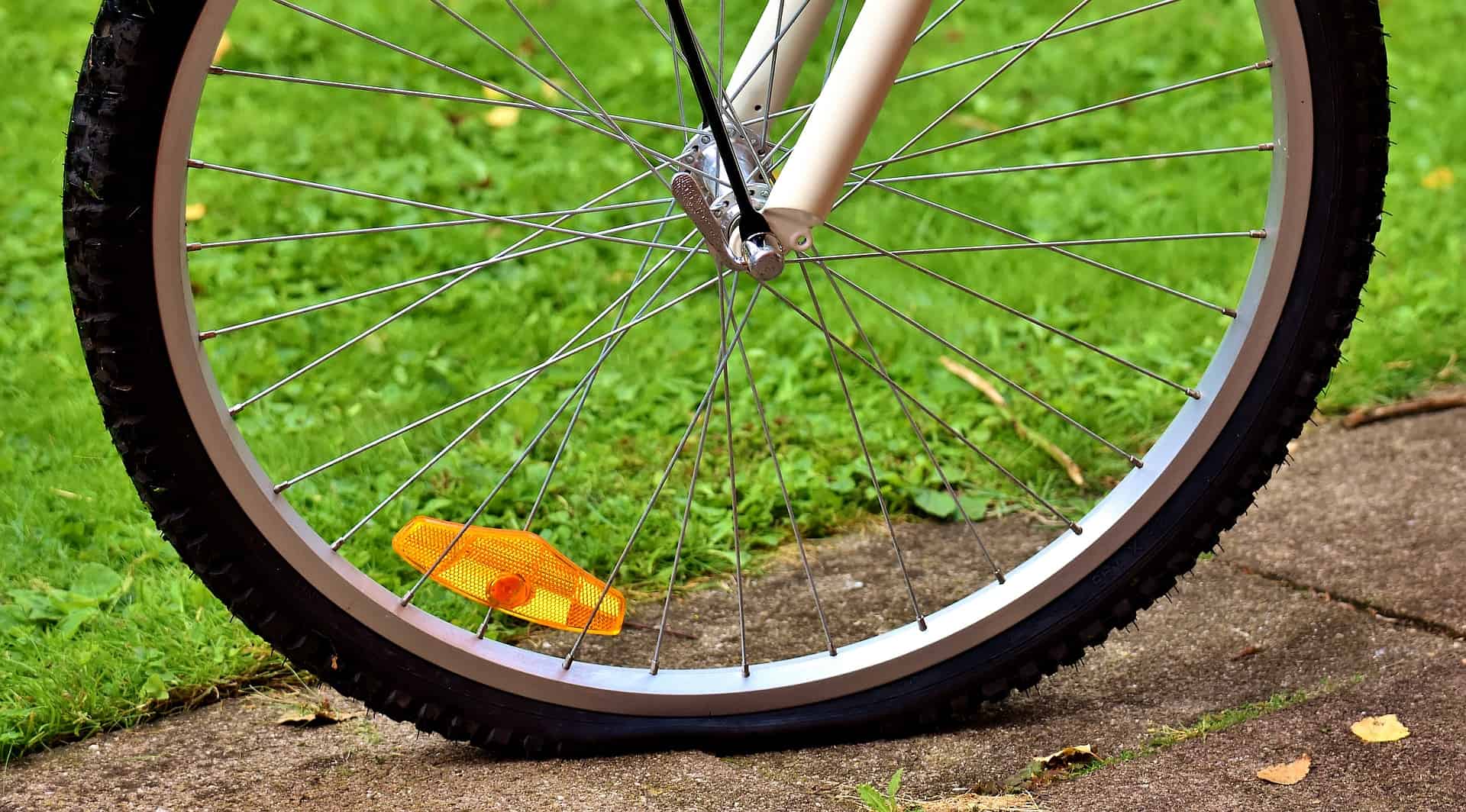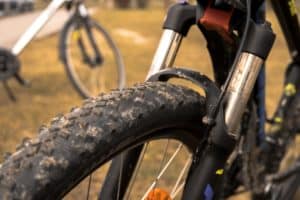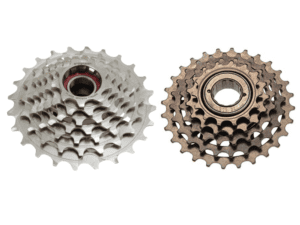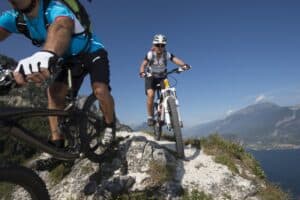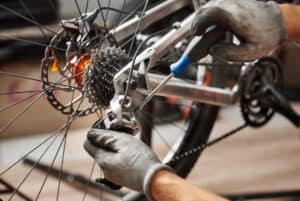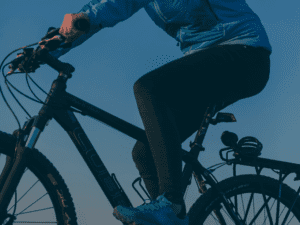The only thing that should contact the ground when riding your mountain bike is the tires. Although they are easy to overlook, the mountain bike tires greatly influence your riding experience more than any other accessory you might add to your bike.
It would be best to start asking questions like what pressure runs through your tires and when last you checked. Our complete guide would cover all you need to know about mountain bike tire pressure.
The Basics of Bike Tire PSI
When looking at bike tire PSI, which is pounds per square inch, it’s essential to note pressurized air in an airtight chamber supports the pneumatic tires. When the PSI is lower, the tire feels softer, but when it’s higher, the tire is harder. The essential maintenance you can perform on your mountain bike is checking the tire pressure.
You might easily figure out your bike tire PSI by checking the rubber on the sidewall. Many manufacturers put the recommended PSI stamped in there, but it still depends on the intended use, how hard you ride, and the tires and rims of your bike. We will explore these and more later on in this guide.
The main thing is to figure out the sweet spot for your mountain bike tire so that the pressure isn’t so high that it blows the rim off and not too low that it rips off the rim.
What is the Right Tire Pressure for Mountain Biking?
The correct tire pressure for mountain biking depends on your riding conditions, tire type, and other requirements. There is no perfect pressure since we all have to ride differently. But, most mountain bike tires have a PSI range of 25 to 50.
Many mountain bikers advise that you use higher pressures on your bike. But, it’s more advisable to use lower pressures for mountain biking. You get a better grip on your tire with lower pressure when you drive on rough terrains. It improves traction and comfort on terrains.
But, it would be best if you were careful to prevent your mountain bike tires from having too low pressure, as this can damage your rim.
What to Consider When Choosing Mountain Bike Tire Pressure
Tire Width and What It Means for PSI
As explained earlier, the pressurized air in an airtight container supports the tires on the bike. The tire requires a particular amount of air pressure to stop ripping off the rim, and wider tires have more air volume. Thus, tire width is closely related to tire pressure.
With a wider tire, you get more air volume, making it possible to use lower pressure. You get more traction and comfort when you have lower pressure as long as you’re using a wider tire. But, a narrower tire has less volume, which means you need more air pressure to keep the rim in place.
You have high pressure with narrow tires and low pressure with wide tires. An average narrow tire is 28mm, and any PSI value less than 80 will be dangerous. But if you have a wider endure tire on your MTB, you can ride at pressures around 20 PSI.
Rider Weight and Bike Tire Pressure
You can check this by sitting on your saddle and reviewing how the tire deforms the more weight you apply to the MTB.
In this case, you need to balance the rider’s weight and tire pressure. The tire pressure should support your weight ideally, but at the same time, it shouldn’t be too hard with high pressure. Thus, the more your body weight, the higher tire pressure your MTB tire should have.
A biker who weighs 150 pounds should set their MTB tire pressure to about 30 PSI. But, someone weighing about 170 pounds should increase the pressure by about 5 PSI, while weighing 160 pounds should go for only 3 PSI more. You should always sit on the bike after setting the pressure to check if it supports your weight ideally.
How Terrain Influences Bike Tire PSI
While you can predict the rider weight and tire width when planning your mountain bike pressure, it isn’t the same with the terrains. You might want to ride the same mountain bike on different trails, and if you’re new to mountain biking, it would be hard to choose which trails need more air pressure and when you should increase your tire pressure.
When you ride your mountain bike, you should focus on how the cycle goes on bumpy or rough terrains. If your bike pressure is low, you might feel a clunk whenever you drive over a sharp rock. But if the tire is too bouncy, you will have to reduce the tire pressure a bit.
After riding on your local trails regularly, it would become easier to know when to reduce or increase the air pressure before going with your MTB on bumpy or smoother terrains.
How Hard You Ride
Your riding style also plays a vital role in determining your mountain bike pressure. If you ride roughly or lightly, you should choose the PSI for the particular situation.
Some riders go hard when they ride, intentionally riding through rocks and rougher terrains. Experienced mountain bikers also like flat landings and big jumps when riding. This kind of riding style would go better with higher tire pressures.
On the other hand, if your riding style is less rough and more precise, you will do better with lower pressures, providing better traction and comfort.
What Tires and Rims You Run
As implied earlier, the type of tire you use also plays a vital role in choosing your tire pressure, just like any other factor previously explained. When considering this, you should focus on the casing on your tire. The single-ply case is lightweight, and the dual-ply case is ideal for rougher riding.
Asides from the casing, you need to check if your bike tires are tubeless or not. You should reduce the tire pressure if it’s a tubeless tire, but non-tubeless tires would need more pressure.
The width of your rim also plays a part in your bike tire pressure. Narrow rims offer less support to the tire, so you need to increase the pressure to ride the bike properly. But, wider rims have more volume and support, making riding with low pressure possible.
The Perfect Pressure is the Perfect Balance
To find the perfect tire pressure for your MTB, you should balance the grip and stability. If the tire pressure is too high, you increase your chance of getting a puncture from the rim. It also reduces traction and gives you a harsh riding experience.
But if you have the perfect high tire pressure, you’re getting higher stability, maximum resistance to side loads, and better protection for the rim. It also supports the sidewall of the tire.
On the other hand, having too low tire pressure would increase the chances of getting rim damage. It would also make your riding experience unstable, reduce the tire’s spring, and make it difficult to make hard turns.
You get a better grip and higher cornering traction if you do low-pressure right since the tire conforms to the terrain. It also makes riding more comfortable.
Not All Gauges are Equal.
Every pressure gauge is different, so you might see some differences when using more than one type of gauge. Instead, you should purchase only one gauge and use that for all your tires. You should also ensure the gauge is adequately maintained as a damaged gauge gives wrong readings.
Conclusion
When choosing your mountain bike tire pressure, there are different things to keep in mind, but it becomes easier to get the right PSI once you have all the details down.
It’s essential to check your bike tire pressure regularly, and this form of maintenance is the cheapest and easiest. Once you understand all the details on our list, you can start enjoying better control, seamless grip, and loads of fun on your mountain bike.
